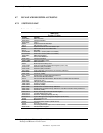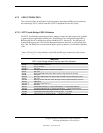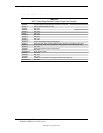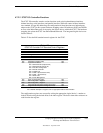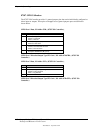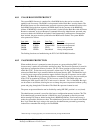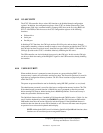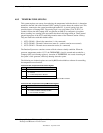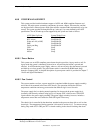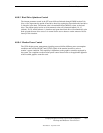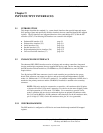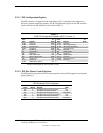
Technical Reference Guide
Compaq Deskpro EN Series of Personal Computers
Desktop and Minitower Form Factors
Third Edition - September 1998
4-53
4.8.3 I/O SECURITY
The 87307 I/O controller allows various I/O functions to be disabled through configuration
registers. In addition, the configuration registers of the 87307 are further protected by Client
Management (CM) logic (contained within a Compaq ASIC) that can be set (using BIOS call
INT 15 AX=E829h) to block access to the 87307 configuration registers of the following
functions:
♦ Diskette drive
♦ Serial port
♦ Parallel port
In blocking 87307 functions, the CM logic monitors ISA I/O cycles and can detect, through
index address-matching, when an attempt is made to access a function provided by the 87307. If
the CM logic has been set to block access, then ISA bus signal AEN or IOWC-, both which the
CM logic provides to the 87307, is disabled, effectively inhibiting the I/O access.
The USB controller can also be blocked from access by the CM logic. In this case the CM logic
can be set to block the routing of the REQ/GNT signals to the USB controller, thereby disabling
the interface.
4.8.4 USER SECURITY
When enabled, the user is prompted to enter the power-on password during POST. If an
incorrect entry is made, the system halts and does not boot. The Power-On password is stored in
eight bytes at configuration memory locations 37h-3Fh. These locations are physically located
within the 87307.
The power-on password function can be disabled by setting DIP SW1 position 1 to on (closed).
The administrator password is stored in eight bytes at configuration memory locations 78h-7Fh.
If the administrator password function is enabled, the user is prompted to enter the password
before running F10-Setup or before booting from a ROMPAQ diskette. If an incorrect entry is
made, the system halts and does not boot.
The QuickLock feature allows, if enabled in F10-Setup through CMOS location 13h bit <2>, the
user to lock the keyboard by invoking the
Ctrl-Alt-L
keystrokes. This initiates an SMI and the
SMI handler then takes the action required to lock the keyboard. If the QuickBlank feature is
enabled at that time then the screen will be blanked as well. The user then must enter the power-
on password to re-activate the keyboard and/or display .
NOTE:
Although the SMI is used for initiating QuickLock/QuickBlank functions, these
functions are not considered power management features.




